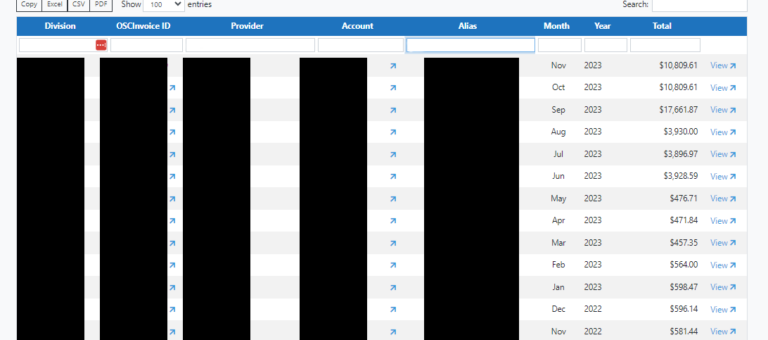POTS line replacement strategy…it’s not exactly glamorous, and it might not be up there in priority with cybersecurity, AI, automation, or client experience in 2024 for most IT leaders. However, not prioritizing it could bring those other projects to a screeching halt by substantially cutting into your budget. We’ve seen POTS line rates go through the roof this year, with some clients seeing a 2,000% increase. Think about what that means for your budget—where a once $500 monthly charge now rings in at a staggering $10,000. Now, imagine having to explain this leap to your CFO. It’s not a conversation anyone wants to have.

A screenshot from OneLink of one client’s massive POTS line rate hike over the past year.
Why are POTS lines suddenly expensive?
POTS lines have become more expensive due to declining usage coupled with the ongoing need to maintain and repair aging infrastructure. Pricing deregulation, economic factors, and the telecommunications industry’s focus on digital networks have also contributed to the increased expenses.
What can I do when my POTS line rate increases?
Disputing an astronomical new rate is an uphill battle. The FCC deregulated POTS line pricing in 2022, giving providers free rein to charge as they please, often with minimal notice to you. Sure, in a negotiation, providers might toss a bone your way—a credit for a fraction of the exorbitant charge—if you buy another product from them. But here’s the catch: this undermines your negotiation power and leaves you committed to a contract that may not align with your business goals. Moreover, you’re still left with the need to replace those POTS lines.
Even if you agree to the higher rate for the line, it’s not guaranteed that the service provider will continue to provide the service. Your lines could still be disconnected, which could send your team scrambling to find a replacement.
Be proactive and prioritize your transition plan.
Being proactive is key. Some leaders are delaying taking action because of costs, business continuity concerns, internal resource planning, or a perceived lack of suitable alternative options.
If you haven’t started planning a transition for any of those reasons, One Source can help.
The One Source team can handle:
- Strategic Planning: We’ll assess your current infrastructure and define your potentially impacted services. From there we can evaluate whether a rip-and-replace approach or a phased transition would be best for you.
- Procurement: We’ll handle the legwork to find the best options at fair rates across all your locations.
- Project Support: Our team engages with providers for updates, and our field service technicians are on standby if needed.
What do you need to do? Simply give the green light for the solution and handle the paperwork—we’ll take care of the rest!
Although cutting-edge technologies and futuristic projects dominate the IT landscape, your POTS lines demand attention. Ignoring this could put a strain on your resources and hinder your ability to execute other crucial projects. It’s time to prioritize this transition—it’s not just about saving costs but ensuring that the IT department can maintain its position as a strategic partner to the business.
Ready to start your next project?
Send a request to speak with a One Source technology advisor.


